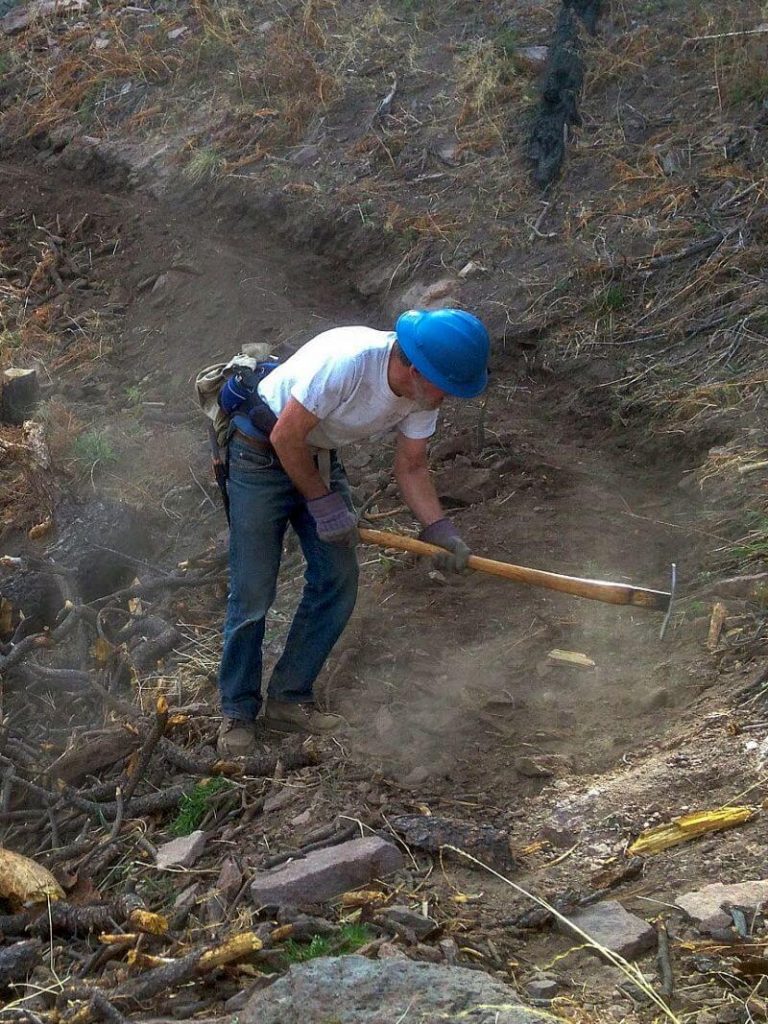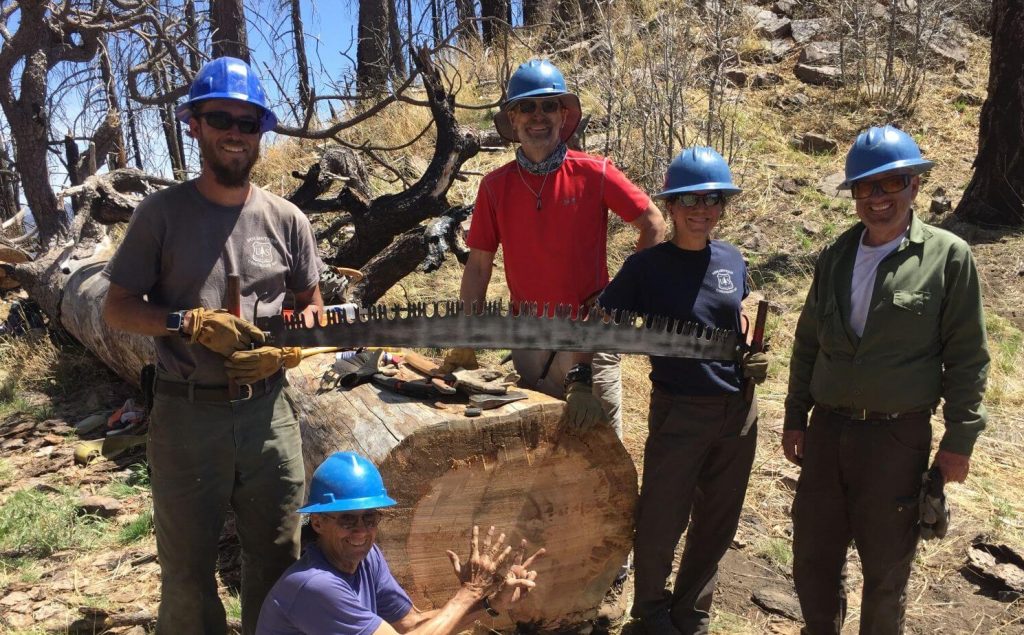Mapping & Clearing Trails: a labor of love…
Spend much time in the Chiricahua Wilderness and you may run into Jonathan Patt or John Sumner.
Patt, who lives in nearby Portal, hikes the area at least weekly. He plans to hike, map and describe all the trails in this iconic but heavily burned wilderness area. His free and continually updated Chiricahua Hiking Trails guide is at http://www.chiricahuatrails.com/. He also leads hikes with the Portal-Rodeo Hiking Group.
Sumner, who grew up in Douglas (about 50 miles south of the wilderness) first backpacked in the Chiricahuas during high school, returning as a University of Arizona student. After leaving Arizona for academic pursuits, he returned 20 years ago on a Sierra Club service trip to clear the Chiricahua Crest Trail. Now he leads at least two week-long trail maintenance trips a year, typically teaming up with Patt and other Portal volunteers.
“Twenty years ago, the Forest Service had a trail crew, augmented by a Sierra Club yearly service trip,” said Sumner. But funds for a permanent crew ended about 2002 while Chiricahua trails were severely impacted by Rattlesnake (1994) and Horseshoe II (2011) fires with a resulting cycle of dead trees / down logs, exploding post-fire vegetation and slope erosion posing continual trail challenges. “The past 15 years I have been coming back twice a year because there is so much to do.”
Sumner now has a seasoned volunteer crew of 10-15 people from Tucson, New York, Indiana, Bay Area, Albuquerque, Chicago as well as Patt and others from Portal. The Portal-Rodeo club also does periodic trail-clearing day hikes. The Forest Service provides tools and allows groups to stay either in Forest Service facilities at Rustler Park or Cima Cabin.

“As our group is aging, many prefer to stay at Rustler and hike to the work site rather than backpack in,” Sumner said. Sumner, a geologist who lived around the U.S. during his academic career and also did international work, always returns from wherever he lives; now Houston Texas. “I have this excuse that this is ‘my’ mountain range; I have a proprietary feeling about the place. The others who live nearby, have that feeling too!”

Patt has lived in Portal for 14 years but first visited the Chiricahuas as a child. He started hiking with the Portal group in 2012, a year after Horseshoe II impacted most trails.
A freelance web designer, Patt had been contributing to Open Street Map—an open source original map of the world anyone can use data from. “In mapping GIS and seeing the impact of Horseshoe II fire, I could see the need for an up-to-date resource for people.” Hence his online trails guide, which he keeps updating as he hikes or re-hikes a trail.
Because of post-fire conditions, the trails are constantly changing. The changes also led to volunteer trail work. “I started volunteering with the Forest Service in 2013. I can go back to trails we left in pristine condition and they are covered in (downed) trees again.”
The post fire moving target is a “motivating factor” for the hiking guide, too. “I am trying to accurately describe and document GPS tracks so even if the trails disappear, they could be put back. Anytime I hike a new trail I document it and take notes. Any time I re-hike a trail, I update on current conditions.”
Patt’s volunteer trail work has led to a new part time career—he contracts with the Arizona Wilderness Coalition for maintenance work on the Arizona Trail and other projects. He is an “amazing resource” according to Zac Ribbing, Forest Service trail coordinator.
When John Sumner first organized Chiricahua volunteers it was hard to interest people in trail work, but now the regulars gladly return. In addition, the effort has attracted younger women who are quite handy with a saw. “The problem is, once they get the saw, you will not get it out of their grip,” Sumner said.
After several years post fire trail restoration, “we are starting to see some light,” Sumner added. For the first five years after a fire, snags continue to fall and there are more downed trees. But now with fewer trees to clear, the crew can move on to restoring trail tread and water bars.
Sumner carries his trail passion and tools into other areas. “I always pack some loppers and a pruning saw.” In a canoe trip to the Boundary Waters Wilderness last year his family encountered small downed trees on a portage. “Everyone else had to walk around them but we had the right tools to clear our way.”

